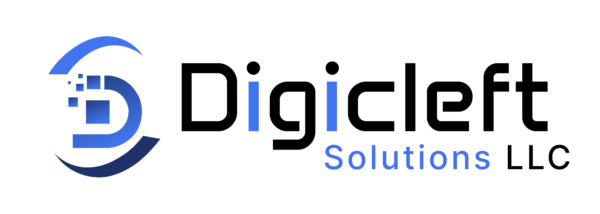
Why AI Automation Is a Growth Multiplier
You don’t scale by working harder—you scale by letting smart systems do the heavy lifting. AI automation tools turn repeatable tasks into reliable, always-on workflows that capture more revenue, delight customers, and free up your team to focus on strategy.
The compounding effect of “set-and-scale”
Once an AI Automation workflow is live—say, qualifying inbound leads or drafting first-pass proposals—it works 24/7. Every incremental improvement compounds: a slightly better prompt, a clearer rule, a tighter integration. That’s how small tweaks snowball into big growth.
From busywork to business impact
If your best people are stuck copying data between apps, no amount of caffeine will fix your growth ceiling. Automation moves the grunt work off their plate so they can ship campaigns, close deals, and build relationships—the parts humans are great at.

Where AI Automation Delivers Quick Wins
Not every part of your business needs AI Automation on day one. But a few areas almost always pay back fast.
Lead generation & qualification
- Enrich every form submission with firmographics.
- Score leads automatically using intent signals (pages viewed, time on site).
- Route hot leads to humans instantly; send nurtures to the rest.
Sales outreach & follow-ups
- Generate personalized first touches that reference role, industry, and pain points.
- Create multi-step cadences that adapt to replies, meetings, and objections.
- Auto-log activities to your CRM so reps can focus on conversations.
Customer support & self-service
- AI Automation chat assistants resolve FAQs, track orders, and collect issue details before hand-off.
- Smart triage tags tickets and suggests responses to agents, reducing handle time.
- Deflect repetitive tickets while improving CSAT—yes, both can happen.
Marketing content & SEO
- Content briefs from keyword clusters, search intent, and SERP gaps.
- First drafts for blogs, product pages, and email campaigns that humans polish.
- Internal linking and schema generation to strengthen site structure.
Back-office workflows (finance, HR, ops)
- Invoice OCR → reconciliation → payment reminders.
- Candidate screening and interview scheduling.
- Inventory alerts and purchase order generation.
Building Your AI Automation Stack (Without the Headache)
Before you binge on shiny tools, pick a valuable, boring problem. Then add only what helps you solve it.
Pick the right use case first
Ask: “If we solved this one process, would it move revenue, margin, or capacity?” If the answer is “sort of,” keep looking.
Tools you’ll actually use (not shelfware)
Favor platforms that integrate with your existing stack (CRM, help desk, CMS) and are easy to administer. If your team can’t adopt it in a week, it’s probably not “easy.”
No-code vs. low-code vs. custom
- No-code: Fastest to pilot (drag-and-drop); great for operations and marketing.
- Low-code: Flexible; combine APIs and logic for unique workflows.
- Custom: Worth it when the process is your secret sauce and needs tight performance or security.
Practical Playbooks You Can Copy
24/7 lead intake with instant qualification
- Website form → webhook to an automation hub.
- Enrich with a data API (industry, size, tech stack).
- LLM evaluates fit and urgency with a transparent rubric.
- High-fit? Create CRM record, assign owner, and ping Slack.
- Low-fit? Start a nurturing sequence with educational content.
Smart sales cadences that don’t feel spammy
- Draft first emails from the prospect’s role + recent company news.
- Use AI Automation to generate 2–3 alternative subject lines and pick the winner after A/B results.
- Auto-summarize replies and update CRM fields so the next touch is context-aware.
Content engine for SEO that compounds
- Cluster keywords by intent (problem, solution, brand).
- Generate briefs with headings, internal links, and FAQs.
- Draft articles, then human-edit for tone, examples, and accuracy.
- Repurpose into social posts, email snippets, and short videos.
- Update quarterly based on performance and new SERP features.
Ticket deflection without frustrating customers
- Build an AI Automation help widget trained on your docs and past resolutions.
- Confidence below threshold? Seamless hand-off to a human with the chat transcript.
- Capture feedback to continuously improve the knowledge base.
Data, Ethics, and Guardrails
Privacy, compliance, and safe prompts
- Keep PII encrypted and minimize what you pass to models.
- Use role-based access and audit logs.
- Red-team your prompts to avoid unsafe or biased outputs.
Human-in-the-loop quality checks
- For external content and critical decisions, require review.
- Maintain prompt libraries with version control.
- Establish “never automate” rules (e.g., refunds over a threshold).
Measuring ROI (So You Know It’s Working)
The 5-metric dashboard
- Time saved (hours/week per workflow).
- Throughput (tasks completed per day).
- Conversion lift (lead → opp, opp → won).
- Customer outcomes (CSAT, FRT, resolution time).
- Cost to serve (per ticket, per lead, per order).
Cost-to-value tracking
Tie each workflow to a line item: tool cost + implementation time vs. revenue gained or expenses reduced. If a workflow can’t be valued, it’s a candidate to cut.
Common Pitfalls (And How to Avoid Them)
Automating chaos
If the underlying process is messy, automation makes it faster… and wrong. Map the current process, remove steps, then automate.
Over-personalization creep
Personalized doesn’t mean creepy. Limit variables to role, industry, and public events; always include an opt-out and respect preferences.
Team Enablement: Skills You Need Now
Prompting, process mapping, and QA
Teach teams to write clear prompts, design decision trees, and test outputs. Document playbooks so wins are repeatable.
Change management that sticks
- Start with a pilot squad of champions.
- Share wins widely (dashboards, before/after).
- Give people a way to suggest automations—they’re closest to the work.
Implementation Timeline (90 Days to Lift-Off)
Days 1–14: Discover & prioritize
Interview stakeholders, identify top 3 processes, define success metrics, and pick one pilot.
Days 15–45: Pilot and prove
Build the workflow, integrate with live tools, run A/B comparisons against the current process, and capture baseline vs. improvement.
Days 46–90: Scale and standardize
Harden prompts, add guardrails, document SOPs, train the team, and roll out to adjacent processes.
Real-World Mini-Case Studies
B2B services: pipeline up, workload down
A boutique consultancy automated lead intake and meeting scheduling. Results in 60 days: faster response times, 30% more qualified calls, and proposals out within 24 hours. Team hours shifted from admin to prep and strategy.
E-commerce: AOV up with smarter support
An online retailer launched an AI Automation help widget and upgraded product discovery with conversational search. Ticket volume per order dropped, CSAT rose, and AOV ticked up thanks to better cross-sell suggestions.
Tools You Can Consider Today
(Examples are categories—pick what fits your stack.)
Automators & orchestrators
- Workflow hubs to connect apps, set triggers, and run LLM steps.
- Browser automation for sites without APIs.
- Data routers that choose the right model for the job.
Sales & marketing copilots
- Prospect research assistants that summarize companies and craft angles.
- Email and social post generators with tone controls and brand memory.
- SEO planners for clustering, briefs, and internal linking.
Support & success stacks
- Knowledge-based chat agents with retrieval and guardrails.
- Agent assist: real-time answer suggestions, form auto-fill, tone polish.
- Post-interaction summaries pushed to CRM.
Work With Partners (When It’s Worth It)
How digicleftsolutionsllc can help
When you’re short on time or internal expertise, a specialist partner like digicleftsolutionsllc can design high-ROI workflows, integrate tools cleanly, and train your team so adoption sticks. The right partner doesn’t push tools—they design outcomes, then assemble the minimal stack to reach them.
Future-Proofing Your Advantage
Agentic workflows and real-time data
The next wave is “agentic” systems: multiple specialized agents collaborating across your stack—pulling live data, taking actions, and learning from feedback. Start small now so you’re ready to plug in these capabilities as they mature.
Conclusion
AI automation isn’t about replacing people—it’s about removing friction so your people can do their best work. Start with one valuable process, build a lean stack, wrap it in guardrails, and measure everything. Momentum compounds. Get the first win on the board, then scale what works.
FAQs
1) How do I pick my first AI automation project?
Choose a repeatable process tied to revenue or cost reduction, with clear inputs/outputs and accessible data (e.g., lead qualification, ticket triage).
2) Will AI Automation make our messaging feel robotic?
Not if you keep humans in the loop. Use AI Automation for structure and speed; let humans edit for nuance, voice, and context.
3) What skills does my team need?
Basic prompting, process mapping, and QA. Bonus points for API familiarity or a low-code platform, but not required to start.
4) How fast can we see ROI?
Teams often see measurable gains within 30–60 days on focused pilots like sales cadences, SEO production, or support deflection.
5) Is this safe for customer data?
Yes—if you implement guardrails: minimize PII, use compliant providers, restrict access, and log everything. Add human review where stakes are high.


